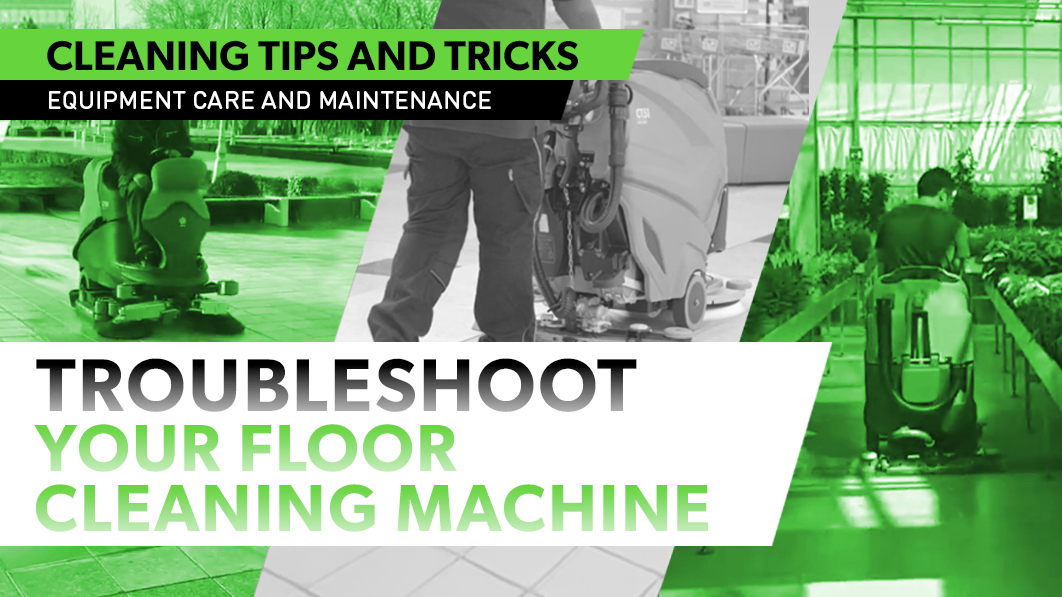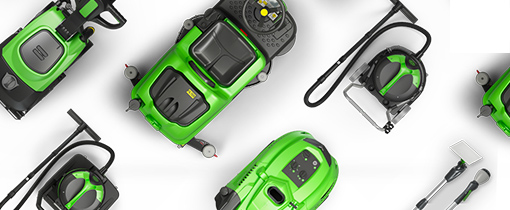
Built to clean floor areas quickly and thoroughly, professional floor cleaning machines such as scrubber dryers and sweepers are essential tools for maintaining safe, clean and sparkling floors in schools, offices, hospitals, warehouses, and commercial kitchens. Understanding the best practices for using machines like scrubber dryers can significantly improve cleaning efficiency. But what should you do if your floor cleaning machines aren’t working properly?
Your cleaning staff only has a limited window of time each day to effectively clean the floors, so they need to carry out regular maintenance and understand how to troubleshoot issues, ensuring these machines remain operational and efficient without costly interruptions.
However, with some simple maintenance and troubleshooting, your sweeper or scrubber dryer can often be back up and running quickly. Below are some of the most common issues and key tips to keep your machines functioning at their best.
1. Pro tip for all floor cleaning machines: get acquainted with the operating manual
IPC scrubber dryers, sweepers, and other cleaning equipment are designed to work hard, keeping your work and business spaces spotless. Your cleaning team can ensure that the equipment lasts longer by following the operating manual. By carrying out regular cleaning and maintenance, storing the equipment safely, and understanding how each part functions, your cleaning equipment will serve you reliably for many years. Choosing the right floor scrubber dryer can also have a significant impact on long-term performance. However, sometimes problems arise. Below are some helpful tips to troubleshoot the most common issues.
2. Is the floor cleaner not picking up water efficiently?
Problem: Vacuum hoses should efficiently suction water during operation. If the hoses don’t suction water off the floor and into the tank like they normally do, something may be clogging the vacuum hose.
Solution: Ensure the machine operators check vacuum hoses for blockages before each use. Clear any debris that could accumulate and block the hose. Then securely fasten the drain hose cap after checking to ensure sufficient suction through the hose during operation.
3. Why won’t the floor cleaning machine turn on?
Problem: If the sweeper or scrubber dryer doesn’t turn on when the power button is pressed, there are several things you can check.
Solutions:
- If your machine is battery-powered, ensure that the plugs and charging ports are clean and securely connected so the battery can charge fully between uses.
- If your machine is connected to the mains, verify that the cord is properly plugged in.
- If all connections, plugs, and cords are in good condition, check that the circuit breaker responsible for supplying power to your charger or machine hasn’t tripped. Reset or replace any blown fuses and report recurring issues to building maintenance.
4. Is the scrub brush hose blocked?
Problem: Scrub brush hose suction can suffer if debris is allowed to accumulate and clog it, the same as a vacuum hose. The longer debris remains in the hose, the harder it is to remove, affecting the quality of cleaning.
Solution: Clean the scrub brush hoses after each cleaning session. Adding this simple task to the daily maintenance routine will help keep your floor cleaning machines in good working condition for a long time.
5. Why is my floor cleaning machine leaving streaks?
Problem: If you see areas behind the cleaning machine that haven’t been cleaned, have streaks, or remain wet when they should be dry, the squeegees or brushes on your machine may be worn down.
Solution: If these components are indeed worn out, they may need to be replaced. However, your operators can extend the lifespan and improve the long-term performance of these essential cleaning components. First, rotate the squeegee to engage all 4 edges for cleaning and make sure you’re using the right squeegee blades. This allows the squeegees to work more efficiently for a longer period, increasing the time between replacements. Additionally, your cleaning team should regularly check the length of the brush bristles. Before and after each cleaning session, inspect the wear indicator on the brushes, which tracks the length of the bristles. When the bristles wear down past this line, they need to be replaced.
6. Are the brushes entangled?
Problem: The brushes may not rotate or function properly if they become entangled with wire, string, pallet wrap, or other debris.
Solution: The best way to prevent this issue is to pre-sweep the floor to remove debris that could get caught in the scrubber dryer brushes. Cleaning teams should also check the brushes before each use to remove any debris caught in the brushes and ensure they’re using the most appropriate brushes for their scrubber dryer. This will prevent entanglements that could overheat and potentially damage the motor. Motor repairs are expensive, so this should be an essential maintenance task before every cleaning session.
7. Is the floor cleaning machine not releasing water?
Problem: If water is no longer flowing through the cleaning liquid filter, it is likely blocked by debris.
Solution: Remove the filter and clear any debris obstructing it. To prevent blockages, check and clean the filter before each cleaning session.
8. Is the floor cleaner not picking up debris efficiently?
Problem: The machine isn’t picking up debris as efficiently. Have you recently checked the debris tray?
Solution: When the debris tray is full, it can no longer collect additional debris. To prevent this, operators should empty the tray after each use.
9. Does the cleaning liquid smell bad?
Problem: If using the scrubber dryer results in an unpleasant smell in the area, the cleaning liquid tank likely needs a clean.
Solution: Either before or after each use, have the machine operator use a detergent or soap solution to clean the tank. This will help keep the machine smelling fresh.
10. Has the underside of the cleaning machine been cleaned recently?
Problem: The underside of your cleaning machines is where the work is done, but it’s also the most difficult area to inspect. If your operators don’t carry out regular checks, problems like those mentioned above could arise.
Solution: Inspect the underside of the cleaning machine for any excess debris, entanglements, or other issues before starting it each day. Remove anything that could hinder its proper operation.
Daily preventative maintenance extends the life of professional cleaning equipment.
An effective way to prevent many of the issues mentioned above is to establish a daily maintenance checklist for cleaning machines. This should include tasks operators need to perform before and after using the equipment each day. Regularly inspecting for and addressing visible issues will prolong the machine’s lifespan, enhance its cleaning power, and improve efficiency. This approach helps to avoid downtime and reduce costs. IPC professional cleaning equipment is built to last for many years with proper care. Please contact us if you have any service-related queries or would like to learn more!
